One of the most talented Spanish artists in history spent the vast majority of his career working at the Spanish court in Madrid.
In this function, Diego Velázquez (1599-1660) painted dozens of portraits of members of the royal family, including multiple children.
One particular girl who was known as “Infanta Maria Teresa” appears in several of these portraits, as well as in Velázquez’s most famous painting.
In this article, you’ll discover some of the most interesting facts about Infanta Margarita Teresa in a Blue Dress, a remarkable blue painting for several reasons.
1. It was completed just a year before the artist passed away
Diego Rodríguez de Silva y Velázquez was born in Seville and he started his career working in his native city in Southern Spain.
He initially painted local people and integrated a remarkable sense of realism into his works. These early paintings are classified as “bodegones” and often featured still-life elements.
He was already one of the most renowned painters in his native city in his early twenties and he hopped on a horse to try his luck in Madrid in April 1622.
A stroke of luck for him was the death of the court painted in December 1622, something he managed to exploit to take this position for himself.
He first painted the minister of King Philip IV (1605-1665), followed by his first royal commission. The king was so impressed with the portrait that he ordered the painter to permanently move to Madrid.

This was the start of a lifelong partnership that ended with the artist’s death in 1660. He completed Infanta Margarita Teresa in a Blue Dress in 1659, a year before he passed away.
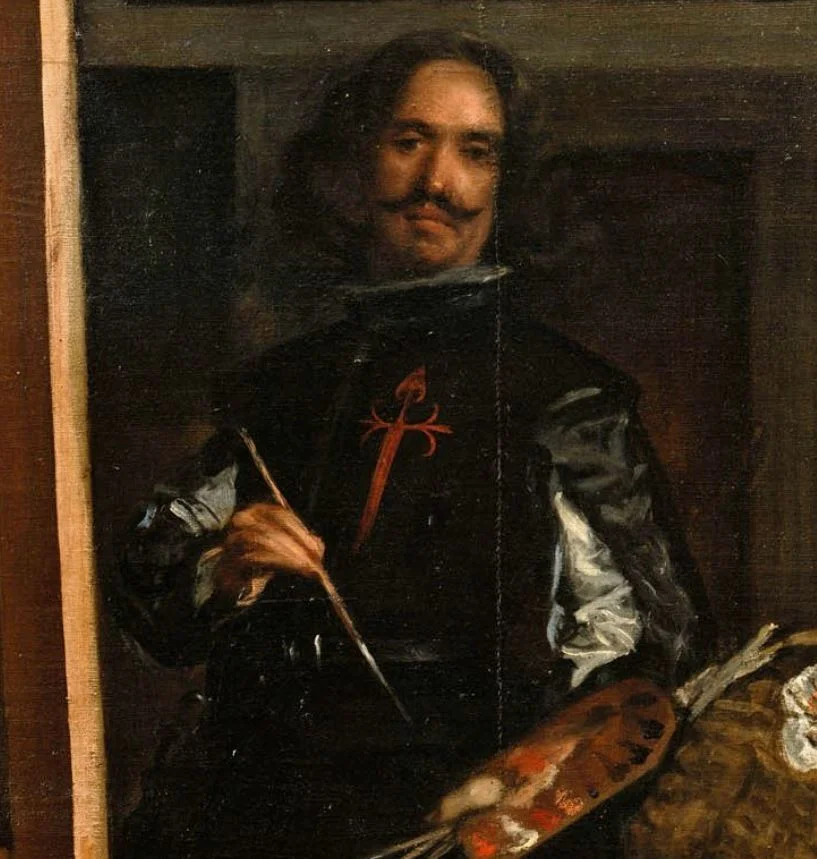
2. It depicts the daughter of King Philip IV of Spain in a remarkable blue dress
This portrait by Velázquez depicts Margaret Theresa of Spain (1651-1673), the daughter of King Philip IV of Spains and the elder sister of Charles II, the final member of the Spanish Habsburgs.
She was also the daughter of Mariana of Austria (1634-1696), whose husband Philip IV was actually her uncle (and this was pretty common at the time as you’ll soon discover).
The girl was 8 years old at the time and wears an incredible blue dress that dominates the entire composition.
It’s a rather formal portrait in which the girl displays a dignified expression. As in most similar paintings, this scene takes place in a room of the Royal Alcázar of Madrid.
The fortification burned down on Christmas Eve of the year 1734 and many priceless artworks were lost during this calamity.

3. The girl also appears in the artist’s world-famous “Las Meninas”
Perhaps the girl looks a bit familiar to you? That’s because she is the most prominent figure in Velázquez’s most famous painting titled “Las Meninas” (1656).
This enigmatic work of art was completed in 1656, just 3 years earlier, at a time when the little girl was only 5 years old.
The complex composition of the painting has been analyzed endlessly by art historians. It features a self-portrait of the painter, as well as a portrait of the king and queen in the mirror in the background.
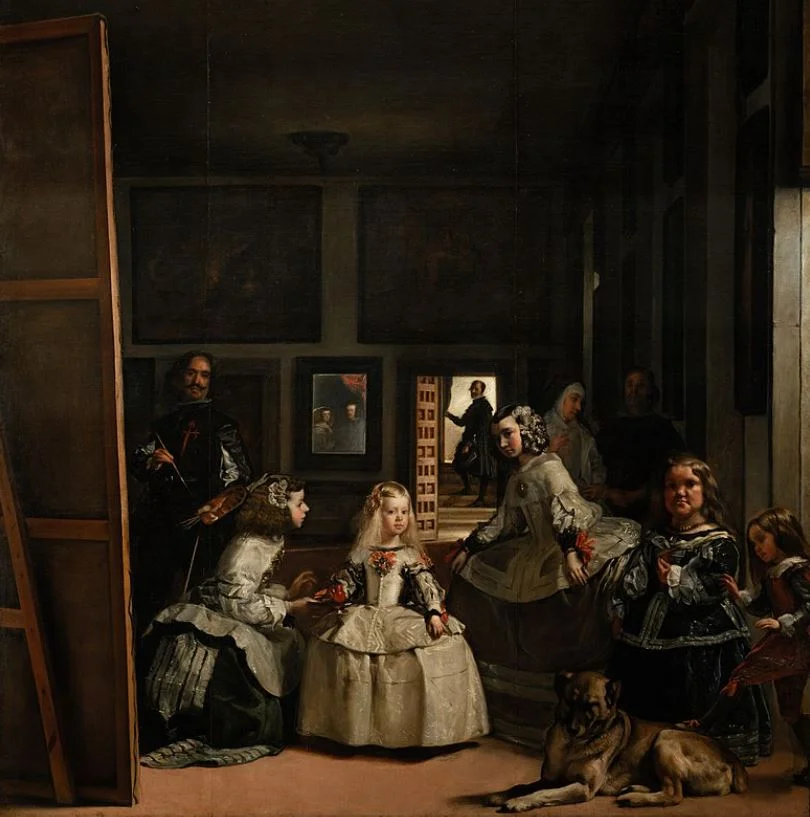
4. Velázquez used remarkably loose brushstrokes to paint the amazing dress
The Spanish painter had been working at the royal court since the 1620s. His style during the final years of his career was radically different from the Realism paintings he produced back in his native Seville.
This is reflected in the manner in which he painted the marvelous silk blue dress that the girl wears and the silver and gold borders that decorate it.
Velázquez used loose brushstrokes that appear to be coherent from a distance. When you take a closer look, you can see the painterly technique that characterizes the artist’s final phase.
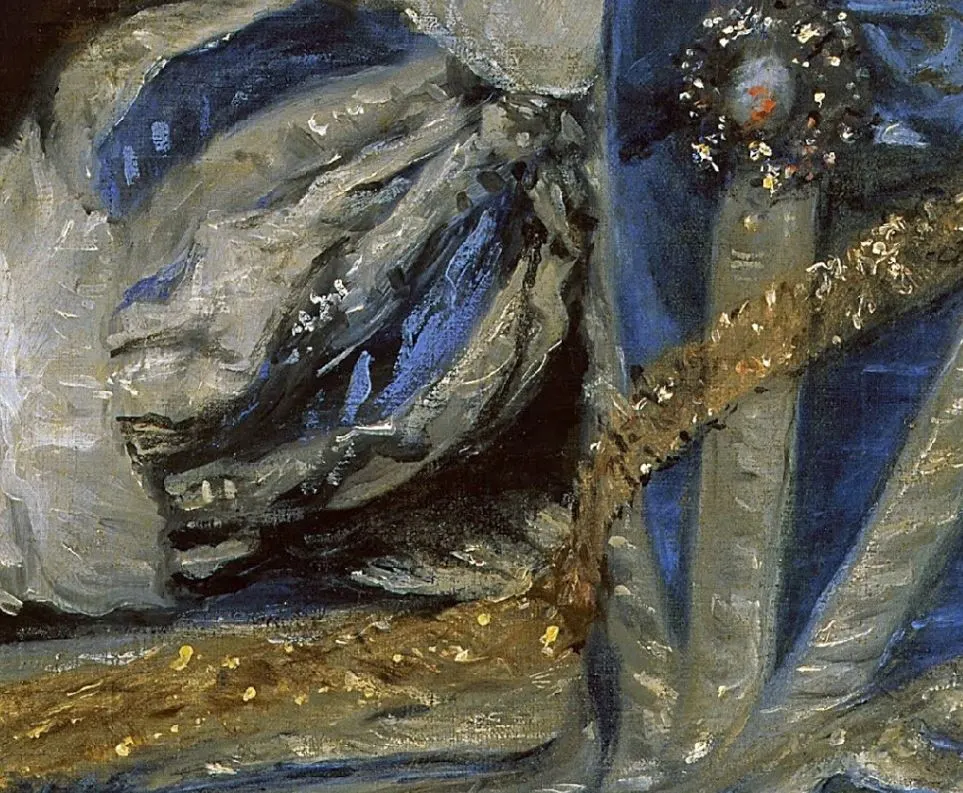
5. The painting probably served as a gift to her uncle whom she eventually married
Most royal portraits served a specific purpose, whether it be for propaganda or as gifts to members of royal families in other countries.
This particular work likely served as a gift to Leopold I, Holy Roman Emperor (1640-1705). He became the ruler of the Holy Roman Empire in 1658 and married Margaret Theresa of Spain in 1666.
These types of arranged marriages were solely aimed at strengthening the position of the royal family and forming bonds.
That’s why it was no problem for Leopold, who was the uncle of Margareth Theresa, to marry his niece and first cousin.
Unfortunately, the young woman died in 1673 at the age of 21 while she was about 4 months into her seventh pregnancy. Generations of inbreeding result in a weak immune system, that’s a certainty.

6. The court painter completed several remarkable portraits of the girl as a child
Margaret Theresa was the central figure of Velázquez’s ultimate masterpiece, but this wasn’t the only time that the artist painted her.
He completed several portraits of the young girl, most of which were sent to Vienna as gifts to her future husband Leopold.
Infanta Margarita Teresa in Pink Dress (1653) and Infanta Margarita Teresa in Silver Dress (1656) are two similar portraits that depict this girl at a younger age.

Was she ever painted as a young adult?
Of course, she was! Several other artists took over Velázquez’s role after he passed away and painted the young woman later on.
One of the most notable paintings is the full-length portrait of the Infanta Margarita Teresa, the Empress, by Gerard Du Chateau. This was completed in 1666, the year she got married.
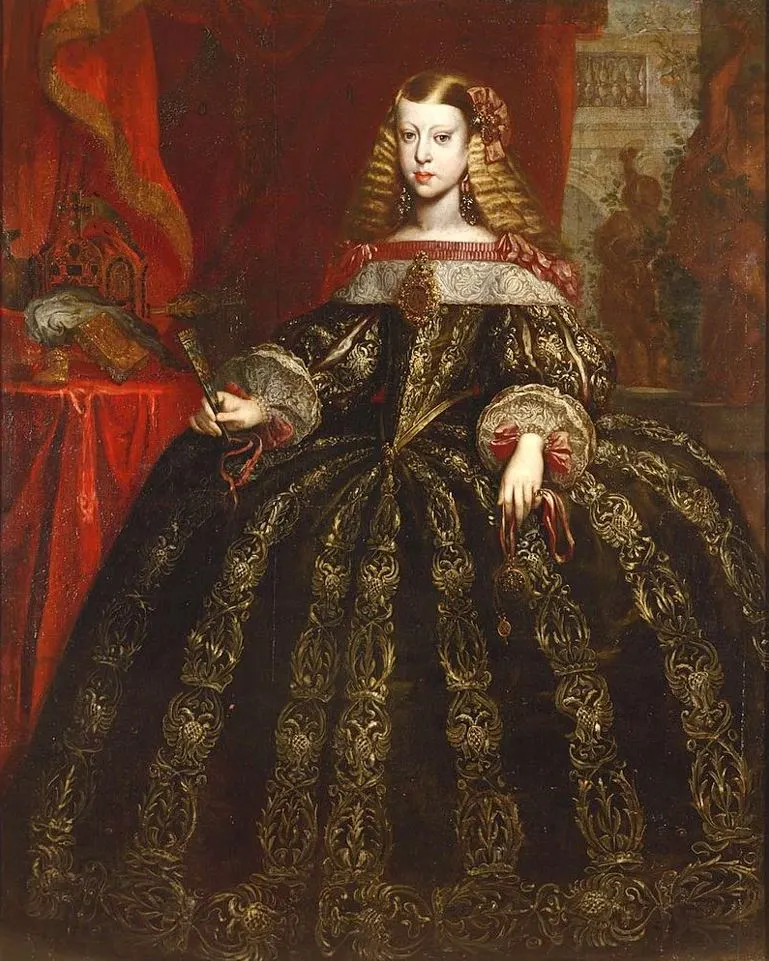
7. How big is Velázquez’s Infanta Margarita Teresa in a Blue Dress?
Most paintings that the Spanish artist completed are fairly large, and this includes portraits such as this one.
Infanta Margarita Teresa in a Blue Dress by Diego Velázquez is a medium-sized oil on canvas painting that has dimensions of 127 × 107 centimeters (50 × 42 inches).
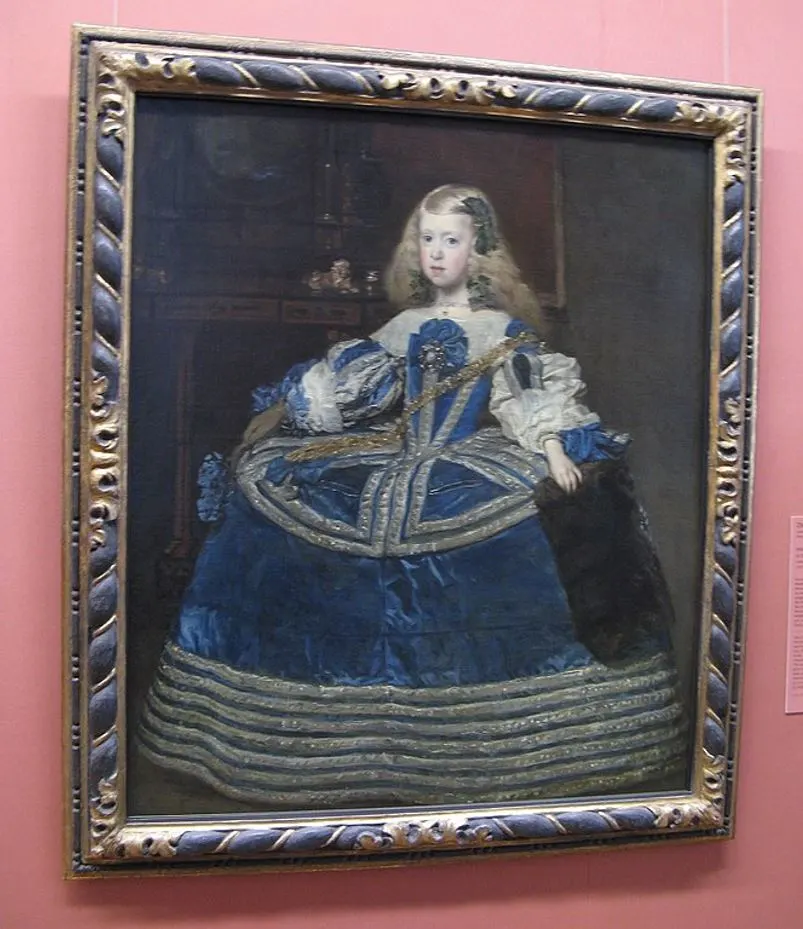
8. Where is the Spanish artist’s painter located today?
One of the main reasons why we know that this painting and others were sent as gifts to Vienna is because they still reside in the Austrian capital today.
This painting is part of the collection of the Kunsthistorisches Museum, one of the most amazing museums in Europe.
The museum in Vienna houses two more works by Velázquez, “Infanta Maria Teresa” (1653) and “Portrait of Prince Philip Prospero” (1659).

